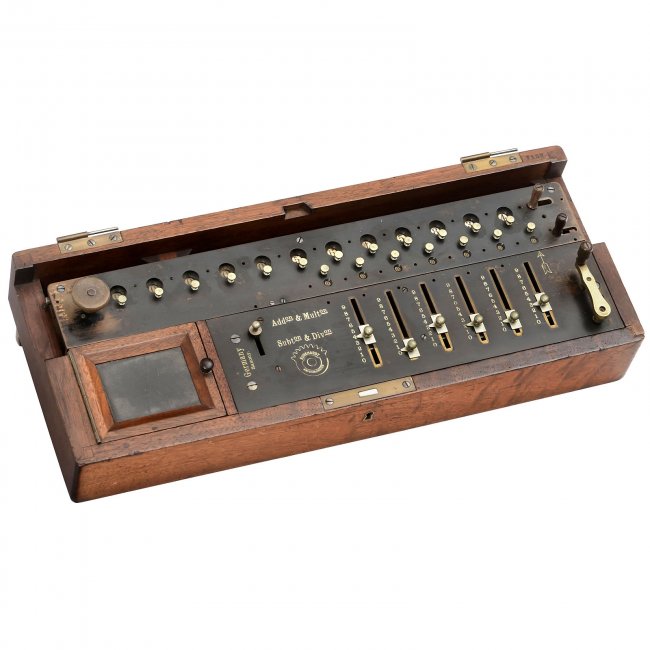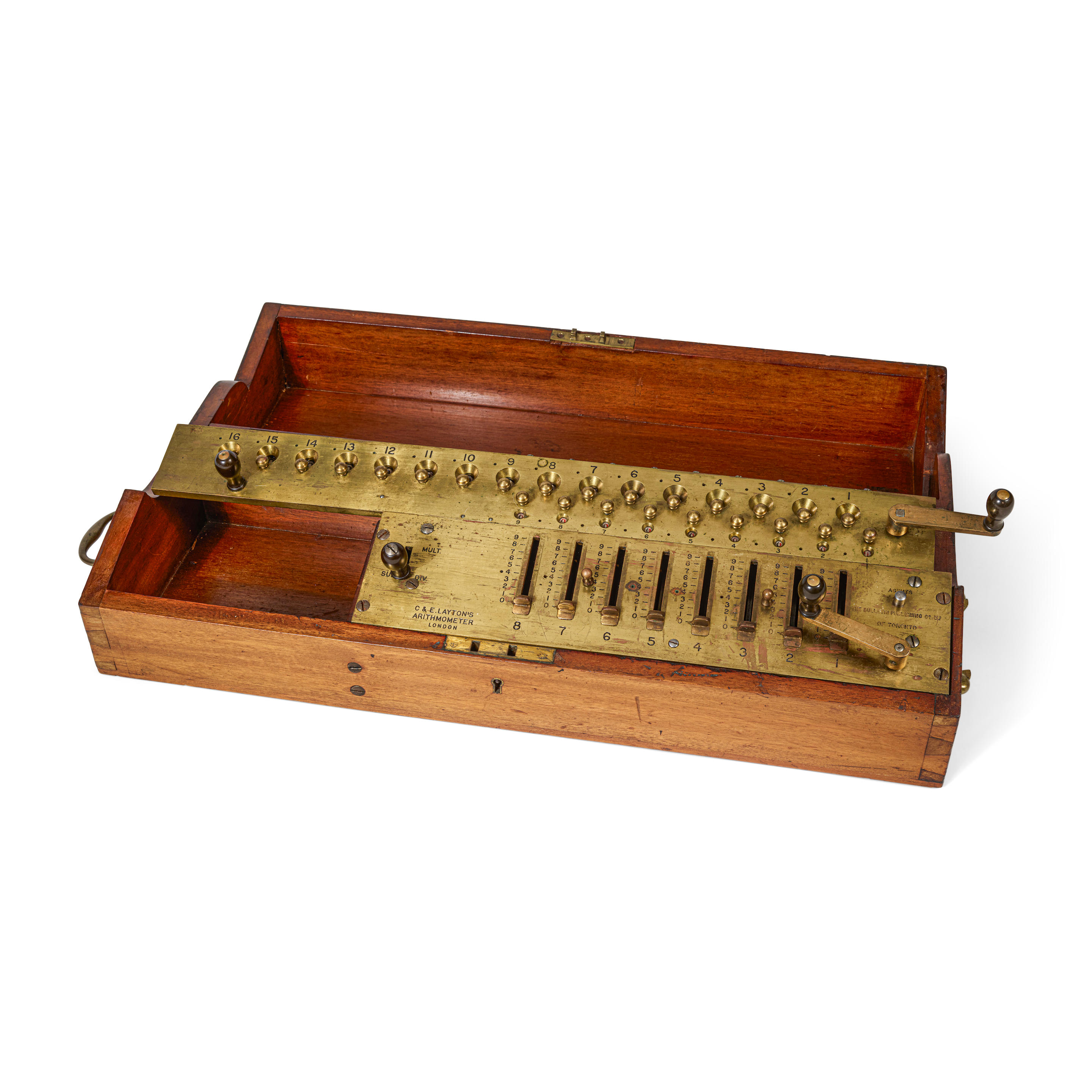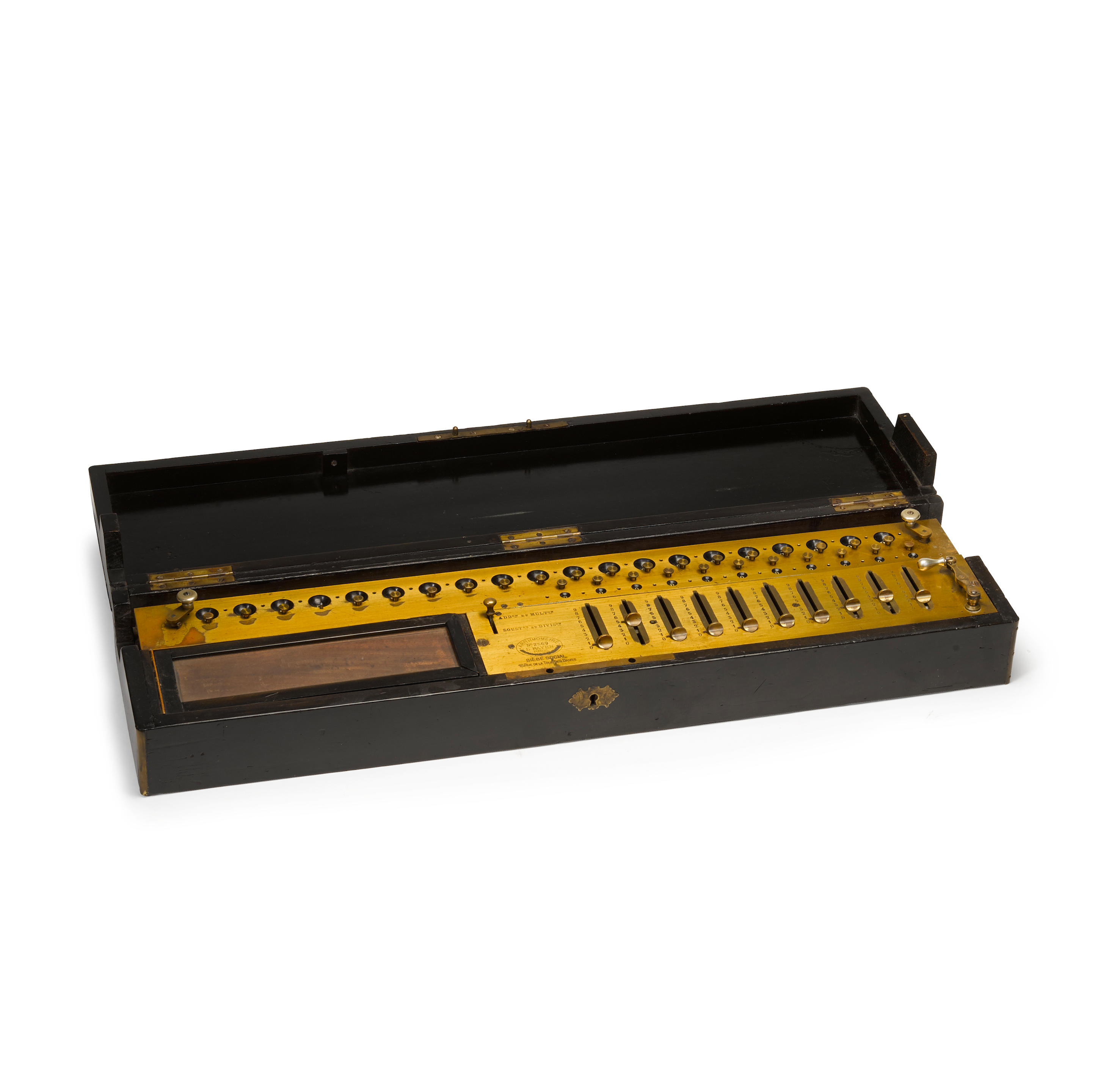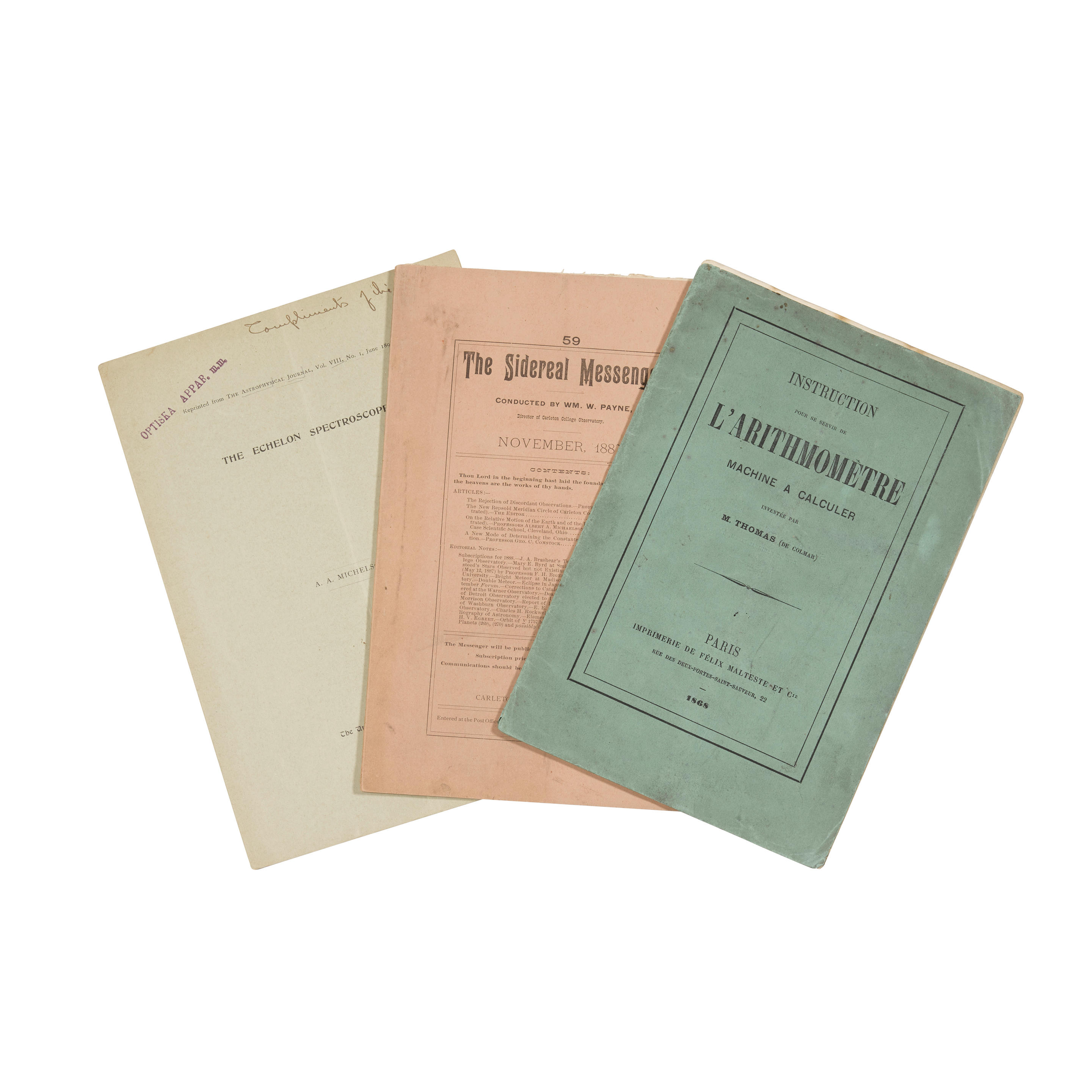[ARITHMOMETER]A Thomas de Colmar Arithmometer (Model T1865A), French, ca. 1880. Signed on brass plate, "Thomas de Colmar, Inventeur. 44 Rue de Châteaudun, Paris, No. 1628. Exposition, 16 Rue de la Tour des Dames." Later stamp indicating modification in the style of English engineer Samuel Tate, "Improvements Added (Tate's Patent), Jan. 1894."
A brass calculating machine in mahogany case (18 x 7 x 3 3/4 in), wood and brass operating handle, function change handle in polished synthetic material, with 12 number displays and 6 sliding indices. Later stamp indicating modification in the style of English engineer Samuel Tate, "Improvements Added (Tate's Patent), Jan. 1894."Condition reportTo request a condition report for this lot, please email science@sothebys.com.Catalogue noteCharles Xavier Thomas de Colmar (1785-1870) first patented the Arithmomètre in France in 1820, becoming the first mechanical digital calculator that could be relied upon for commercial purposes. The machine could perform addition and subtraction of two numbers, as well as multiplication and division using the movable accumulator. Arithmomètres were manufactured from c. 1850 through 1915 and were a key tool in the paradigm shift from written to mechanical calculation. While mechanical arithmetic machines were built following the designs of Blaise Pascal and Gottfried Leibniz in the 17th century, machines of this kind were not practical for everyday use until Thomas de Colmar introduced his improved design in the 19th century.
RELATED LOTS: Lot 42
REFERENCES:Johnston, Stephen. "Making the Arithmometer Count." Bulletin of the Scientific Instrument Society 52 (1997): 12-21.
[ARITHMOMETER]A Thomas de Colmar Arithmometer (Model T1865A), French, ca. 1880. Signed on brass plate, "Thomas de Colmar, Inventeur. 44 Rue de Châteaudun, Paris, No. 1628. Exposition, 16 Rue de la Tour des Dames." Later stamp indicating modification in the style of English engineer Samuel Tate, "Improvements Added (Tate's Patent), Jan. 1894."
A brass calculating machine in mahogany case (18 x 7 x 3 3/4 in), wood and brass operating handle, function change handle in polished synthetic material, with 12 number displays and 6 sliding indices. Later stamp indicating modification in the style of English engineer Samuel Tate, "Improvements Added (Tate's Patent), Jan. 1894."Condition reportTo request a condition report for this lot, please email science@sothebys.com.Catalogue noteCharles Xavier Thomas de Colmar (1785-1870) first patented the Arithmomètre in France in 1820, becoming the first mechanical digital calculator that could be relied upon for commercial purposes. The machine could perform addition and subtraction of two numbers, as well as multiplication and division using the movable accumulator. Arithmomètres were manufactured from c. 1850 through 1915 and were a key tool in the paradigm shift from written to mechanical calculation. While mechanical arithmetic machines were built following the designs of Blaise Pascal and Gottfried Leibniz in the 17th century, machines of this kind were not practical for everyday use until Thomas de Colmar introduced his improved design in the 19th century.
RELATED LOTS: Lot 42
REFERENCES:Johnston, Stephen. "Making the Arithmometer Count." Bulletin of the Scientific Instrument Society 52 (1997): 12-21.













Testen Sie LotSearch und seine Premium-Features 7 Tage - ohne Kosten!
Lassen Sie sich automatisch über neue Objekte in kommenden Auktionen benachrichtigen.
Suchauftrag anlegen